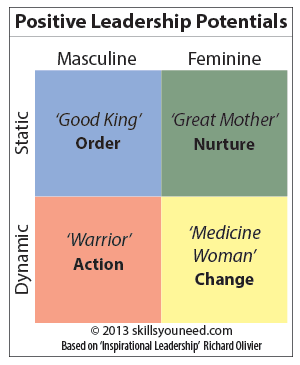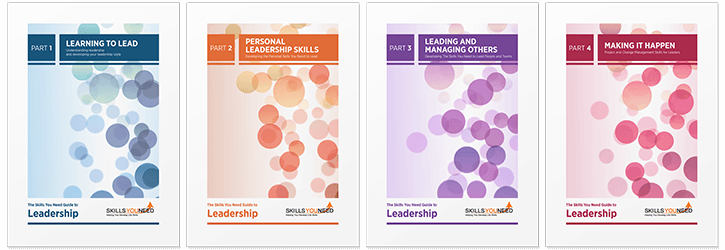Leadership Styles
See Also: Developing Your Leadership StyleThere are many different models of leadership styles, from those that look at how much ‘control’ you want to others based around ‘potential’.
One of the best-known models is Daniel Goleman’s Six Leadership Styles. Goleman is probably best known for his work on Emotional Intelligence, but he also carried out a ground-breaking study on leadership, published in the Harvard Business Review in 2000 as ‘Leadership that Gets Results’.
Based on a three-year study of over 3,000 executives, Daniel Goleman identified six different leadership styles:
- Coercive (or Commanding)
- Pace-setting
- Authoritative
- Affiliative
- Democratic
- Coaching
Six Leadership Styles
1. Coercive
Coercive leaders demand immediate obedience.
In a single phrase, this style is ‘Do what I tell you’.
These leaders show initiative, self-control, and drive to succeed. There is, of course, a time and a place for such leadership: a battlefield is the classic example, but any crisis will need clear, calm, commanding leadership. This style does not, however, encourage anyone else to take the initiative, and often has a negative effect on how people feel.
2. Pace-Setting
Pace-setting leaders expect excellence and self-direction.
This style can be summed up as ‘Do as I do, now’.
The Pace-setter very much leads by example, but this type of leadership only works with a highly-competent and well-motivated team. It can only be sustained for a while without team members flagging. Like the Coercive leader, Pace-setters also show drive to succeed and initiative, but instead of self-control, these are coupled with conscientiousness.
3. Authoritative
Authoritative leaders move people towards a vision.
This style is probably best summed up as ‘Come with me’.
These leaders are visionary and it's the most useful style when a new vision or clear direction is needed, and is most strongly positive. Authoritative leaders are high in self-confidence and empathy, acting as a change catalyst by drawing people into the vision and engaging them with the future.
4. Affiliative
An Affiliative leader values and creates emotional bonds and harmony.
Affiliative leaders believe that ‘People come first’.
Such leaders demonstrate empathy, and strong communication skills, and are very good at building relationships. This style is most useful when a team has been through a difficult experience, and needs to heal rifts, or develop motivation. It is not a very goal-oriented style, so anyone using it will need to make sure others understand that the goal is team harmony, and not specific tasks.
It is probably obvious from this that it cannot be used on its own for any length of time if you need to ‘get the job done’.
5. Democratic
Democratic leaders build consensus through participation.
Democratic leaders are constantly asking ‘What do you think?’.
Such leaders show high levels of collaboration, team leadership and strong communication skills. This style of leadership works well in developing ownership for a project, but it can make for slow progress towards goals, until a certain amount of momentum has built up. Anyone wishing to use this style will need to make sure that senior managers are signed up to the process, and understand that it may take time to develop the consensus.
6. Coaching
Coaching leaders develop people.
The phrase that sums up this leadership style is ‘Try it’
Coaching leaders allow people to try different approaches to problem solving and achieving a goal in an open way. The coaching leader shows high levels of empathy, self-awareness and skills in developing others. A coaching style is especially useful when an organisation values long-term staff development.
See our pages: What is Coaching? and Coaching Skills for more information.
An Alternative Model of Leadership Behaviours

There are many other models of leadership. For example, in his book, Inspirational Leadership, Richard Olivier takes the story of Shakespeare’s Henry V as the ultimate leadership textbook. He outlines a four-part model of leadership which chimes remarkably well with Goleman’s empirical findings.
Olivier divides the world into static and dynamic, and masculine and feminine energies, so that the four possible ‘positive leadership potentials’ are:
Static Masculine (the ‘Good King’, creating and valuing order)
Static Feminine (the ‘Great Mother’, nurturing those around her)
Dynamic Masculine (the ‘Warrior’, favouring action)
Dynamic Feminine (the ‘Medicine Woman’, important in change)
While these titles may seem rather fanciful, it’s not hard to see that the Good King would fit with Goleman’s Democratic style, the Great Mother with Coaching and Affiliative, the Warrior clearly with the Coercive and Pacesetting styles, and the Medicine Woman with Authoritative leadership.
Developing Your Leadership Style
Each one of us has a preferred leadership style, usually the one to which we default in times of stress. One of the easiest ways to work out which is your default is to see what sort of things you say when stressed. Are you the person saying ‘What do you think?’ or is it ‘Right, we’ll do it my way and now!’?
The most effective leaders do not use just one style, but are able to move between styles, choosing the one that best suits the situation.
Once you know your preferred style, you can start to develop the others. For example, if you are naturally a democratic or affiliative leader, you may find that it difficult to take command or swift action in a crisis. You will need to find a way to adopt the Commanding or Coercive style in a way that feels true to you, perhaps by injecting some humour into your orders.
One advantage of looking at several alternative models of leadership is that one or other may give you a clearer idea of how to move between the possible styles. Olivier’s premise is that Henry V, as a leader, moves between all these styles in the course of the play. Studying how he does so can be a surprisingly insightful experience into day-to-day leadership. It may be some comfort to understand that even Henry had to work hard to develop his leadership style beyond ‘Warrior’.
Further Reading from Skills You Need
The Skills You Need Guide to Leadership eBooks
Learn more about the skills you need to be an effective leader.
Our eBooks are ideal for new and experienced leaders and are full of easy-to-follow practical information to help you to develop your leadership skills.
A Final Thought
Although many people think of leadership as being a ‘work’ skill, there are plenty of opportunities for using different leadership styles at home.
Your family may well be a safer ‘sounding board’ for trying out new ideas than some of your less-tolerant colleagues, especially as you experiment with styles that are further away from your natural one, and therefore feel difficult.
However, persevere, flex your leadership muscles in safe situations, and you will almost certainly find yourself using your new skills naturally and confidently ‘for real’ when you need them.
Take our quiz:
What Sort of Leader are You?
Continue to:
Developing Your Leadership Style
Myers-Briggs Type Indicators (MBTI)


